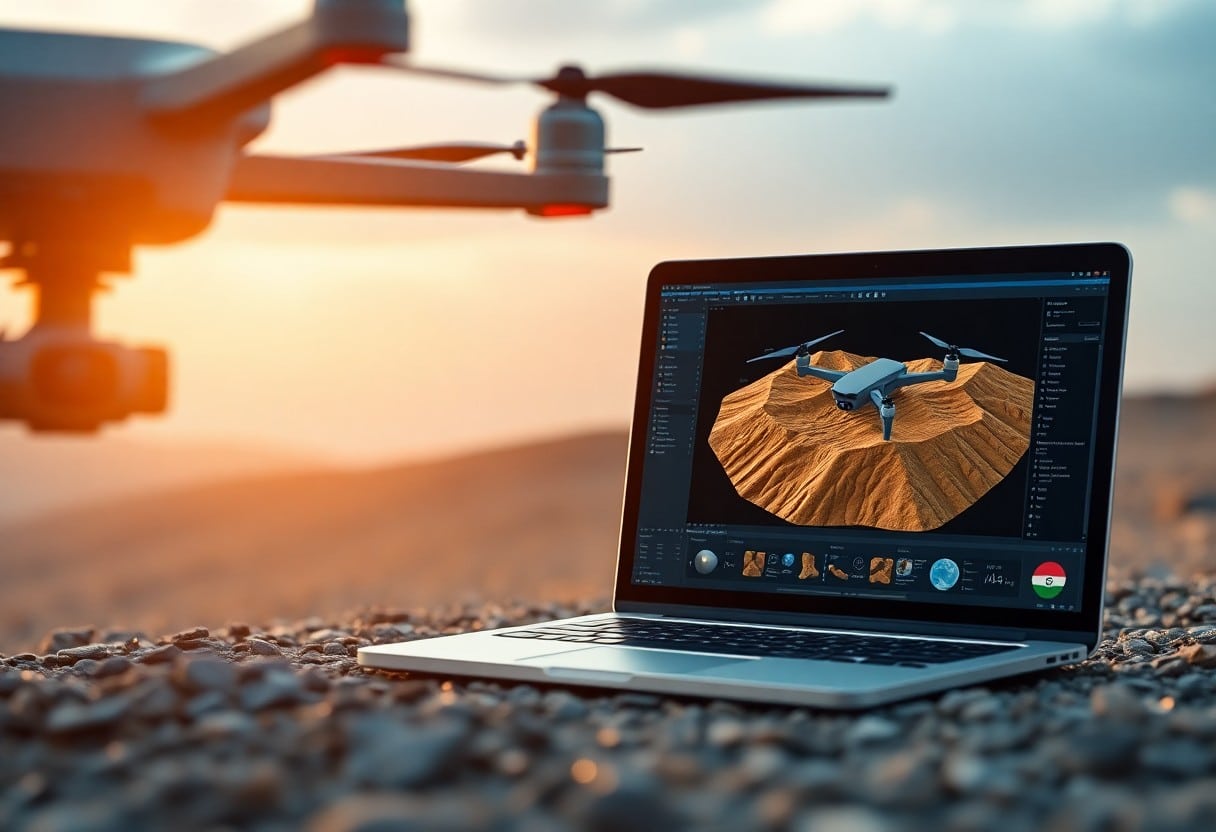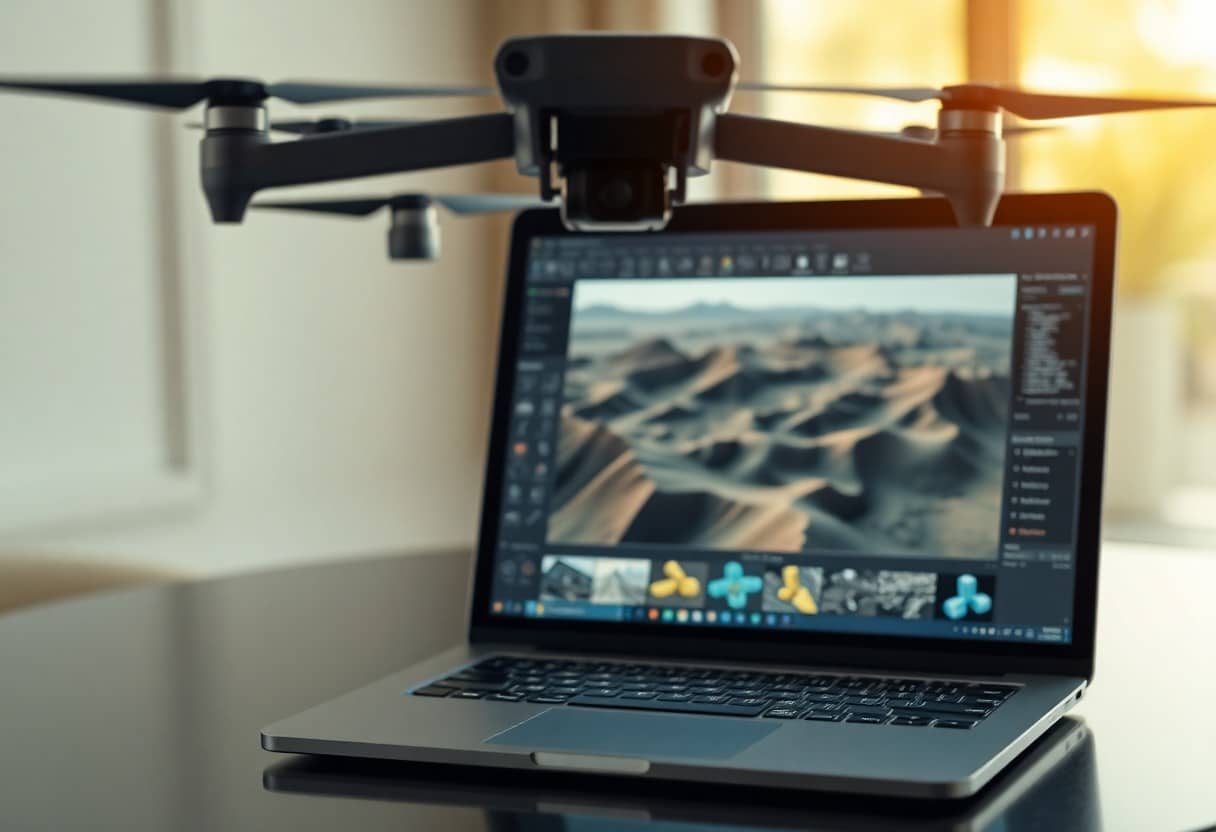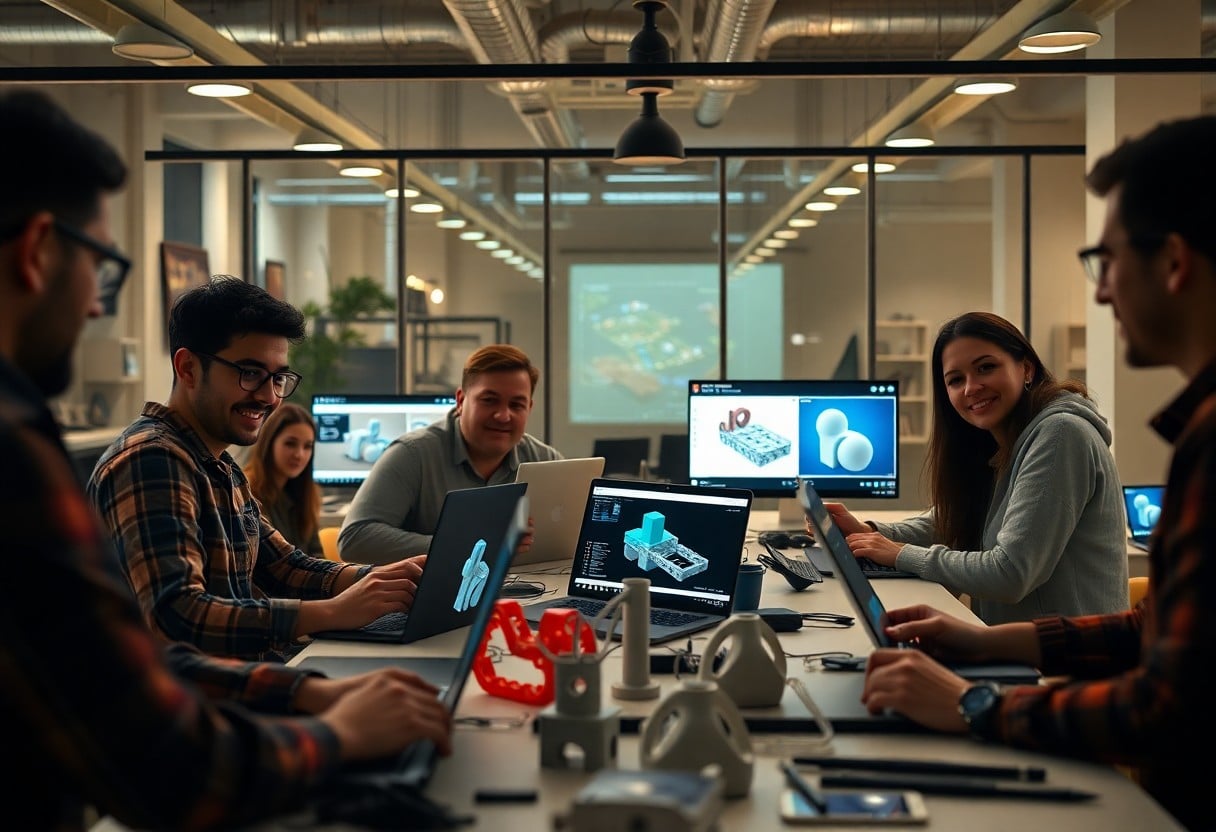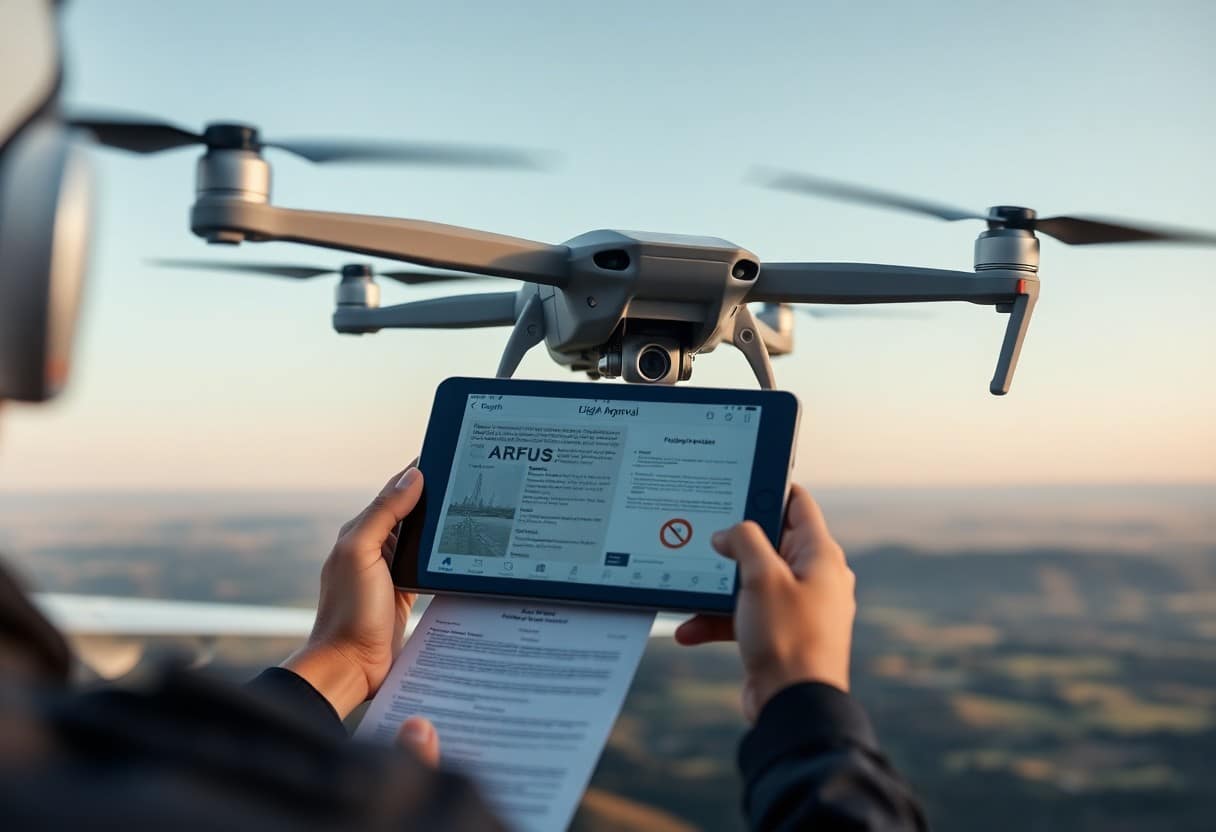3 Basic Steps to Effective Drone 10D Modeling Technology
In today's fast-paced technological era, 3D modeling using drones has become an innovative and efficient way. This article will introduce you toTen Key StepsHelp you master theEffective Drone 3D Modeling TipsBy taking these steps you will be able to improve your modeling accuracy and enhance the overall quality of your project. By taking these steps, you will be able to improve the accuracy of your modeling and enhance the overall quality of your project. We will also discuss how to avoid some of the most commonDangers and MistakesThe first step is to make your drone modeling experience a smoother one. Ready to start the journey?
Key Points:
- Choosing the right drone :) Select the most suitable drone based on the type of data required and the accuracy of the model.
- Photography Programs : Carefully plan the shooting path to ensure that all necessary areas are covered to enhance the integrity of the model.
- Camera Settings. Use the correct camera settings (e.g., shutter speed, aperture, and ISO) for high-quality images.
- Appropriate Overlap. Ensure that there is sufficient overlap in the captured image; an overlap rate between 70% and 90% is usually recommended for front, rear, and side views.
- Ground Control Points. Ground Control Points (GCPs) were set up in the shooting area to improve the accuracy and reliability of the modeling.
- Data Processing. Ensure that appropriate software is used for data processing to convert images into 3D models.
- Model checking : After the modeling is completed, the model is carefully checked for accuracy and detail, and any necessary corrections are made.
Definition of project objectives
Before you start 3D modeling your drone, you first need to define your project goals. This not only helps you stay focused, but also increases efficiency. Clear goals will guide you every step of the way, ensuring that you continue to align your results throughout the process and ultimately achieve the desired benefits.
Define the scope of the project
Determining the scope of your project is fundamental to its success. You need to have a clear understanding of the business needs, what you want to achieve and the possible constraints. This will help you avoid wasting resources during implementation and ensure that the project is completed on time.
Identify key stakeholders
Identifying key stakeholders is a critical step in drone 3D modeling. You need to identify the people who will be involved in the project, including customers, team members, and others who will influence the outcome of the project. This will ensure that their needs and expectations are fully considered throughout the process.
When identifying key stakeholders, you should pay particular attention to theirImpactrespond in singingdemand (economics). List all parties that may be involved or affected, whether they areInternal Teamor external partners. In your next steps, make sure you maintain good communication with these stakeholders and take their feedback into account in the decision-making process. In this way, you can increase the success of your projects and achieve better results.
Choosing the right drone
Before proceeding with 3D modeling, it is crucial to choose a drone that suits your needs. Make sure the drone you choose hasHigh Resolution CameraThe drone should have a good flight stability and durability in order to capture accurate data. Evaluate the characteristics of different drones based on your project needs, which will directly affect your final imaging results and modeling quality.
Evaluation Capability
When choosing a drone, you need toAssessing their technical competenceThe specifications of different drones are different. Different drones have different specifications, including image resolution, flight time and range. You should consider these factors carefully to ensure that the drone will meet your 3D modeling requirements and be able to operate in a variety of terrain and environmental conditions.
Assessment of budgetary constraints
Budget is a factor that should not be overlooked when choosing a drone. You need to consider the drone'sPurchase CostsThe cost of maintenance and potential add-ons such as cameras and software. Set a clear budget and find the best drone for your needs within that range to get the best price/performance ratio.
When evaluating budget constraints, you may find that there is a wide range of prices for drones. Determine your needswill help you select the most appropriate model. Considering the value of short-term use and long-term investment may affect the setting of your budget. If you have a limited budget, you may choose a model with a high price-performance ratio or consider leasing the equipment, which can reduce the pressure of the initial investment and at the same time gainHigh-quality 3D shooting capabilityThe

Plan your mission
Prior to 3D modeling of the drone, thePlan your missionIt's important. This not only helps you determine the angle and coverage you need, but also improves the safety and efficiency of your flight. Carefully consider a variety of factors, including weather, terrain and surroundings, to ensure you can accomplish your mission.
Conducting site surveys
Before starting the flight, perform theSite surveyIt is the key to success. This process helps you understand the characteristics of the terrain and potential risks. Planning safe landing zones and obstacles to avoid are an integral part of this step.
Developing flight paths
in formulatingFlight pathsWhen it comes to the flight path, you need to design the best flight path based on the characteristics of the site to ensure that the drone is able to capture all the important details efficiently. Taking into account different flight altitudes and speeds, as well as how to avoid obstacles, can improve the accuracy of your data. In this process, using specialized drone navigation software to plan the path will make the process easier and more efficient, and reduce potential flight risks.

Capture high quality images
To model in 3D effectively, you need to capture high-quality images. That means making sure the light is centered and the camera is in good working order when you take the picture. Crisp and detailed imagesIt will provide important information for later modeling to ensure the accuracy and refinement of the overall results.
Utilize the appropriate settings
When you're ready to capture images, it's important to use the correct camera settings. Adjusting the aperture, shutter speed and ISO to suit the prevailing environmental conditions will ensure that the images areBrightness and clarityReach the optimal level.
Includes overlapping shots
Be sure to include some overlapping shots when doing your filming. This not only helpsConstruct more complete 3D modelsThe model can also provide more data support in post-processing, thus improving the accuracy of the model.
Overlapping shots are an important step in improving image quality and enhancing the accuracy of 3D modeling. There must be at least 60% to 80% of overlap between each picture.So that your modeling software can effectivelyIdentify detailsand build three-dimensional structures. In this way, you will be able to generate models with a greater sense of depth and reduce errors in the modeling process, further enhancing the professionalism of your work.

Ensure data accuracy
When performing drone 3D modeling, it is important to ensure the accuracy of your data. You need to understand that each step can affect the final result, especially when choosing the right equipment and setup. More in-depth information can be found in this articleDrone Photography Tips - 9 Steps to Capturing Stunning Aerial PhotographyThe
Utilizing control points
Utilizing Ground Control Points (GCPs) is an important step in improving data accuracy. These control points help provide a reliable reference when working with your data to better align and calibrate your 3D model. With proper measurement and placement, you can significantly reduce errors in your model.
Monitoring of flight parameters
Monitoring your drone's flight parameters ensures optimal data quality. Proper flight altitude, speed and direction can affect the accuracy of the captured images. Therefore, you must check these parameters regularly to avoid generating low-quality data.
notablyFlying Heightrespond in singingtempoThe control of the camera is very important. If you fly too low, you are likely to capture images that are not clear enough, while flying too fast may blur the captured images. You should ensure that you have a clear plan and preset parameters before each flight to get the best data and minimize the need for retakes. Ultimately, this will directly improve the overall accuracy and usability of your 3D model.
Efficient Data Handling
When performing 3D modeling of a drone, theEfficient Data HandlingIt's important. You need to ensure that no time is wasted in data processing to maximize your productivity. We recommend that you refer to theBasic Steps to Getting Airborne Approval for Your Droneto get more ideas and tips on how to improve your data handling methods.
Use of high quality software
Choosing the right software is a key factor in the quality of your 3D modeling. You should choose software that is widely recognized in the industry to ensure that you are maximizing the potential of your drone data. High-quality software provides more accurate results and helps you edit and analyze your data more efficiently.
Optimized Processing Settings
To achieve the best results, you need to optimize the processing settings for your project. This includes choosing the right resolution and output options to ensure that the resulting 3D model is both clear and detailed. You need to be aware that in some cases too high a setting can result in long processing times, soreasonable balancePerformance and time are key. Ensure that your hardware and software configurations are capable of handling your chosen settings so that you can generate high quality models without wasting resources.
Enhanced 3D model
When modeling in 3D, it's important to enhance the quality of your model. By adjusting textures, lighting, and details, you can give them a more realistic feel that will attract the attention of your audience. This not only helps to improve the professionalism of your work, but also sets you apart in a competitive market.
Texture Refinement
To achieve the best results, you need to focus on texture refinement. Improving the resolution of the texture and the texture of the application will make the appearance of the object more realistic and immersive to the viewer.
Adjustment of light and shadow effects
Adjusting lighting effects is another important step in enhancing a 3D model. Proper lighting not only emphasizes the details of your model, but also creates a striking visual effect. Always make sure that your lighting configuration matches the atmosphere of the scene to enhance the overall realism and appeal.
When adjusting the light and shadow effects, theYou should consider the intensity, color and angle of the light source.The light is a natural, natural light. Strong contrast can make certain details stand out, while soft light enhances a soft and natural feel. lighting effectNot only does it add depth, but it also helps to direct the viewer's attention to the focal point of your design. Remember to keep testing and fine-tuning to find the best balance of light and shadow. This way, your 3D model will be visually appealing!
Verifying Model Accuracy
In the course of 3D modeling, theVerifying the accuracy of the modelIt's important. By verifying your data with precision, you can ensure that the final product is a true reflection of the real world. Regular checks not only improve the accuracy of your model, but also make it more reliable for future use and sharing.
Comparison with existing data
In verifying the accuracy of the modelComparison with existing datais an effective method. This can help you find any possible errors or biases and further improve the accuracy of the model. Here are the main steps of the comparison:
Comparison Steps
| Steps | Description |
| Obtaining Data | Collect available existing data to provide benchmarking. |
| Data Comparison | Compare your modeling results with existing data. |
| Recognizing Differences | Mark any data inconsistencies for follow-up. |
Check for Differences
Check the relationship between the model and the existing datadifferenceIt is an important step in the validation process. It not only improves the overall quality of the model, but also helps you to make timely adjustments when problems are identified. Confirming the realistic accuracy of each model parameter is critical to the success of your project.
When checking for discrepancies, you should scrutinize every detail and ensure the accuracy of all critical data, including dimensions, proportions, and relative positions. It is highly recommended that you use a computer-aided tool to help you detect discrepancies so that you can quickly identify problems. When you findSignificant DifferencesConsider re-evaluating the design parameters of the model when you are working on it, so that you can avoid any difficulties in subsequent use. Performing this process will give your model a more professional look, which in turn will improve the standard of delivery of your work.
Sharing the end result
After all the 3D modeling work is done, you need to share the final output in the most efficient way possible to ensure that your customers are satisfied with your results. Use the10 Basic Steps to Safe Drone Operation - Beginner's GuideLearn how to prepare your models for display and present them in the best possible light. A well-prepared presentation can make your results stand out and win the trust and satisfaction of your clients.
Preparatory Exhibitions
You should make sure that all images and data are organized properly before presenting. Verify that your model is optimal in terms of both visual aesthetics and data accuracy. Before projecting or printing, do a few checks to ensure its quality, as this will directly affect the first impression of the customer.
Collecting Customer Feedback
Customer feedback is an important tool for you to improve and enhance the quality of your service. By asking your customers for their feedback, you can not only learn about the strengths and weaknesses of your models, but also get suggestions for improving future projects. This feedback will help you make adjustments to your clients' needs and improve the effectiveness of your future work.
When collecting customer feedback, it is important to keep theOpennessIn addition, we obtain genuine feedback from our clients through questionnaires, interviews and direct face-to-face communication. Emphasize timely feedbackIt allows you to quickly adjust your strategy and demonstrates your focus on customer needs. Remember, every piece of customer feedback is an opportunity for you to improve, especially when it comes to specificArtwork DetailsThis will allow you to meet customer expectations more precisely in future projects.
10 Key Steps to Effective Drone 3D Modeling Technology
Mastering effective drone 3D modeling techniques will greatly enhance your professional skills. By following these 10 key steps, you'll be able to accurately capture and reconstruct space, whether it's for engineering, architecture or geographic intelligence. From choosing the right equipment to data processing, these steps will guide you to accurate and efficient modeling. Ensuring that every step of your process is carefully considered will create high-quality 3D models that will enhance your work and customer satisfaction.
Frequently Asked Questions
Q: What are the 10 basic steps for effective drone 3D modeling techniques?
A: The 10 basic steps of an effective drone 3D modeling technique include: selecting the right drone and camera equipment, identifying the shooting area, setting up an aerial photography plan, conducting a site survey, taking high-quality photos, data collection and processing, generating a 3D model, performing post-processing, verifying the model accuracy, and finally delivering and applying the model.
Q: Why is choosing the right drone and camera equipment so important for 3D modeling?
A: Choosing the right drone and camera equipment ensures that the quality of the images captured is high enough, which is crucial for generating accurate 3D models. Different drones are equipped with different cameras, which affect the resolution and angle of view.
Q: What kind of site survey is required before shooting?
A: A site survey helps to understand the characteristics of the environment and possible obstacles, such as trees, high pressure lines, etc. It also helps to determine the best take-off position and shooting path to improve safety and shooting efficiency. In addition, it helps to determine the optimal take-off position and shooting path to enhance flight safety and shooting efficiency.
Q: What kind of shooting strategy can improve the modeling results?
A: Using an overlapping shot strategy (generally recommended for 70%-80% overlaps) ensures data integrity. This strategy allows enough of the same area between each photo to help the modeling software to better stitch the images together.
Q: How do you process the post-shooting data to generate 3D models?
A: After shooting, you need to use professional data processing software (e.g. Pix4D, Agisoft Metashape, etc.) to upload the photos for processing, which will automatically align the photos, generate point clouds, grids and textures, and finally form a 3D model.
Q: What are the steps in post-processing and why are they important?
A: Post-processing includes removing unnecessary data, trimming colors, adding details and fixing model defects, etc. These steps improve the quality and usability of the final model and enhance the user experience.
Q: How to verify the accuracy and reliability of 3D models?
A: Verification of the accuracy of the model can be achieved through in situ comparisons with field markers, the use of Ground Control Points (GCPs), and cross-checking with other data sources, which ensures that the resulting model is credible and usable.




